|
|
|
Sort Order |
|
|
|
Items / Page
|
|
|
|
|
|
|
| Srl | Item |
| 1 |
ID:
101823
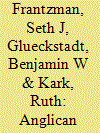

|
|
|
|
|
| Publication |
2011.
|
| Summary/Abstract |
This study investigates the history and development of the Anglican Church under the Turkish, British, Jordanian and Israeli regimes. The paper recounts the development of various societies within the Anglican church and their politization, especially in the context of decolonization and the Arab-Israeli conflict over time. Our analysis is strengthened by an examination of the struggle over Church property between the local Arab clergy, the British Church leaders and the Israeli government. We conclude with a discussion of the scope and nature of the political and spatial/legal development of the Anglican Church in Palestine/Israel in the modern era. We stress the unique influence of spatial, political, economic, and political implications, at the local and international levels and situate the history within the general context of the Middle East, colonialism, Church history and local empowerment.
|
|
|
|
|
|
|
|
|
|
|
|
|
|
|
|
| 2 |
ID:
098060
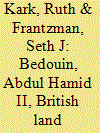

|
|
|
| 3 |
ID:
130736
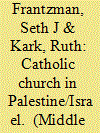

|
|
|
|
|
| Publication |
2014.
|
| Summary/Abstract |
This paper traces the history and development of Catholic real estate ownership in Palestine/Israel, uses of the properties, and the impact on the physical and cultural landscapes and on identity formation of the local population. It takes a long-term perspective, beginning with the return, after a short absence, of the Franciscans to the Holy Land in the fourteenth century and ending with the present position of the Catholic Church and the properties of its various sects and orders. It examines the history of the Catholic Church in Palestine/Israel under the Ottoman, British, Jordanian, Egyptian and Israeli regimes. In contrast to the large body of existing scholarship on the Catholic Church in the Holy Land, this examination of the local history of the Catholic Church views it through the prism of land ownership and properties. The landholdings of the Catholics are compared and contrasted with findings of previous studies by authors on those of the Greek-Orthodox and Anglican churches. Special attention is paid to the differences in frameworks, functions and geographic dispersal of the church organs, such as monasteries and educational institutions as well as the property of the local Arab Greek-Catholics. The article also examines the effect of Arabization of the Catholic clergy in relation to the lands owned by the Catholic Church and finds that, unlike other churches in the Holy Land, the Catholic Church has not generally experienced ethnic-related dissent over property.
|
|
|
|
|
|
|
|
|
|
|
|
|
|
|
|
| 4 |
ID:
112526
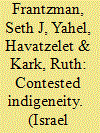

|
|
|
|
|
| Publication |
2012.
|
| Summary/Abstract |
The article examines the history of the development of a discourse that regards the Bedouin of the Negev desert in Southern Israel as an indigenous people of Israel. This movement has generated a great deal of activity in recent years, particularly the submission of a petition to the U.N. by activists asking for the Bedouin to be recognized as having indigenous communal rights in 2005. The subject is examined in the context of the worldwide recognition of indigenous rights that culminated in the U.N. Declaration on the Rights of Indigenous Peoples, which was adopted on the 13th of September 2007. The article takes account of the processes and activities of individuals who have helped lead and craft a narrative of an indigenous Bedouin identity. It also explores the rise of an indigenous consciousness movement as reflected in states, academic institutions, NGOs, and individuals across the world, with a focus on some of the implications for Israel and the region of the current struggle for recognition for indigenous rights.
|
|
|
|
|
|
|
|
|
|
|
|
|
|
|
|
| 5 |
ID:
187097
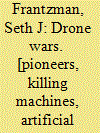

|
|
|
|
|
| Publication |
New York, Bombardier Books, 2021.
|
| Description |
xx, 267p.hbk
|
| Standard Number |
9781642936759
|
|
|
|
|
|
|
|
|
|
|
|
Copies: C:1/I:0,R:0,Q:0
Circulation
| Accession# | Call# | Current Location | Status | Policy | Location |
| 060232 | 623.7469/FRA 060232 | Main | On Shelf | General | |
|
|
|
|
| 6 |
ID:
114257
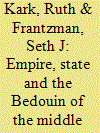

|
|
|
|
|
| Publication |
2012.
|
| Summary/Abstract |
The Bedouin of the Middle East have been one of the region's most marginalized groups in modern times. This study assesses the interplay between state policies and the Bedouin in the last 150 years, from a comparative standpoint. We examine the development of land laws in the Middle East as they have affected the Bedouin, from the enactment of the Ottoman land laws of 1858 up to the present. Moreover we explore whether the land laws and the fate of the Bedouin are associated with the characteristics of the regime in each country. We find that the imposition of land laws and policies directed at nomadic and sedentarizing Bedouins has depended on disparate factors such as the origins of the leadership of countries (i.e. Bedouin or non-Bedouin) and the social and economic models embraced. Regimes with origins in the tribal-Bedouin fabric of the Middle East have pursued land policies that were favorable to the Bedouin, whereas regimes drawing their strength from urban elites and with socialist outlooks encouraged very different policies. We also consider whether the case of the Bedouin in Israel is unique or reflects a larger regional context.
|
|
|
|
|
|
|
|
|
|
|
|
|
|
|
|
|
|
|
|
|